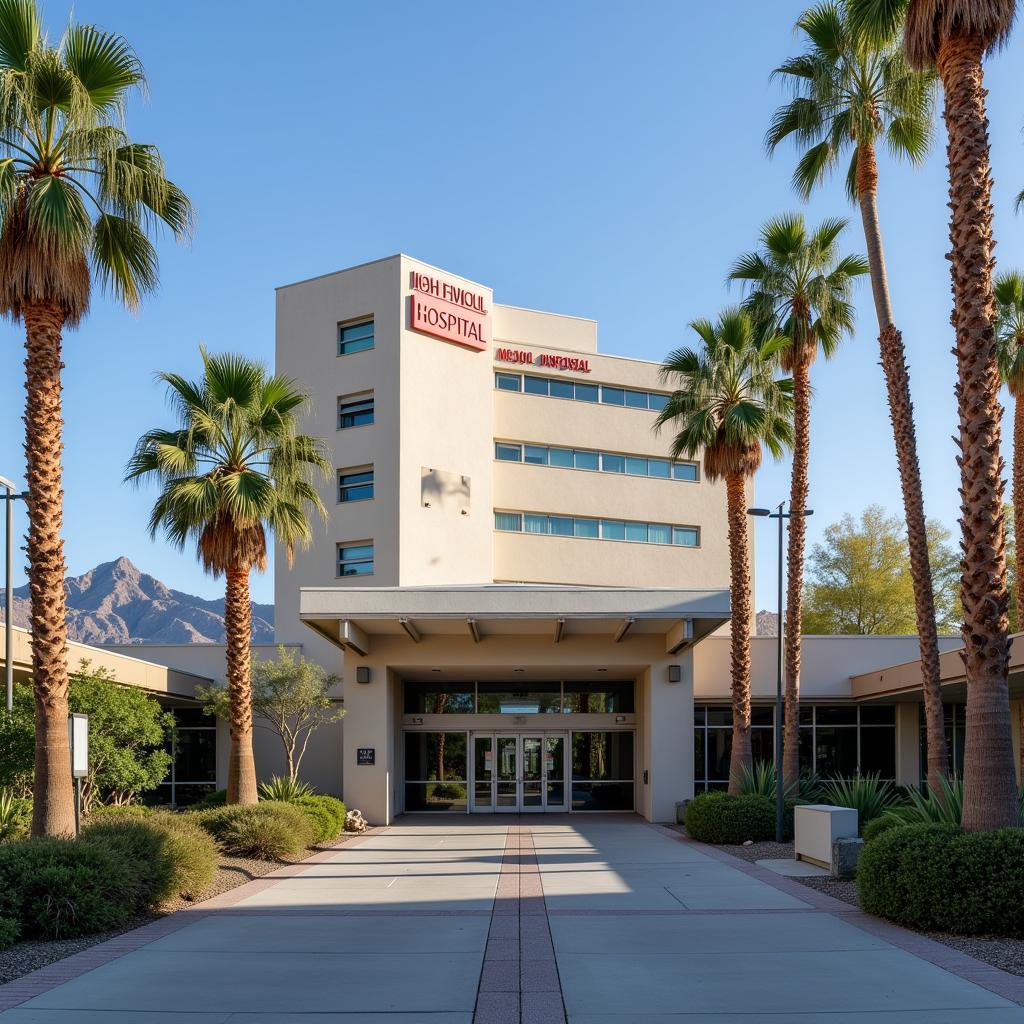Desert Hot Springs, California, known for its natural hot mineral springs and tranquil desert landscapes, often poses a challenge for visitors seeking healthcare services. This phenomenon, known as a “hospital desert,” describes areas with limited access to hospitals and medical facilities.
While the city boasts wellness retreats and spas, finding immediate medical care can be difficult. This guide explores the challenges and solutions for navigating healthcare in Desert Hot Springs, ensuring your well-being while enjoying this desert oasis.
Understanding the Challenges of a Hospital Desert
Desert Hot Springs, like many rural and remote areas, faces a shortage of hospitals and specialized medical practitioners. This scarcity can lead to:
- Longer wait times for appointments and emergency services: Limited healthcare facilities translate to increased demand, often resulting in prolonged wait times for patients requiring urgent or routine care.
- Limited access to specialized treatments: Residents and visitors may need to travel further for specialized medical services, such as cardiology, oncology, or neurology.
- Transportation barriers: Reaching distant hospitals can be challenging for individuals without personal vehicles, particularly for elderly residents or those with mobility issues.
Navigating Healthcare in Desert Hot Springs
Despite the challenges, residents and visitors can access healthcare services through various avenues:
- Urgent Care Centers: These facilities address immediate, non-life-threatening medical needs, offering a faster alternative to hospital emergency rooms for issues like sprains, infections, or minor burns.
- Telehealth Services: Remote consultations with healthcare providers via video conferencing have become increasingly popular, improving access to primary care and specialist advice.
- Community Health Clinics: These clinics provide essential medical services to underserved populations, often offering affordable or sliding-scale fees.
Tips for Accessing Healthcare in Desert Hot Springs
- Plan ahead: Research nearby urgent care centers, community clinics, and telehealth options before your visit, noting their locations, hours of operation, and accepted insurance plans.
- Keep a list of emergency contacts: Save local emergency numbers, your primary care physician’s information, and contact details for nearby hospitals in your phone and a physical copy.
- Understand your insurance coverage: Verify which healthcare providers and facilities are within your network to maximize coverage and minimize out-of-pocket expenses.
Exploring Neighboring Cities for Hospital Services
For comprehensive hospital care and specialized treatments, residents and visitors often turn to neighboring cities:
- Palm Springs: Located approximately 13 miles from Desert Hot Springs, Palm Springs offers a wider range of medical facilities, including Desert Regional Medical Center, a Level II trauma center.
- Indio: Situated about 20 miles southeast, Indio houses John F. Kennedy Memorial Hospital, another significant healthcare facility serving the Coachella Valley.
 Palm Springs Hospital Exterior
Palm Springs Hospital Exterior
Advocating for Improved Healthcare Access
Community members and local organizations are actively advocating for improved healthcare infrastructure in Desert Hot Springs. Initiatives include:
- Attracting healthcare professionals: Offering incentives and loan forgiveness programs to encourage physicians, nurses, and specialists to practice in underserved areas.
- Expanding existing facilities: Lobbying for increased funding to enhance the capacity and services of current community clinics and urgent care centers.
- Establishing a hospital: Advocating for the construction of a full-service hospital within Desert Hot Springs to provide comprehensive medical care closer to home.
Finding Peace of Mind in the Desert
While navigating healthcare in a hospital desert like Desert Hot Springs presents unique challenges, understanding the available resources and planning can ensure peace of mind during your visit. By utilizing local clinics, telehealth services, and being aware of neighboring hospital facilities, you can enjoy the rejuvenating benefits of this desert destination while prioritizing your health and well-being.
FAQ
Q: Does Desert Hot Springs have its own hospital?
A: No, Desert Hot Springs does not currently have a hospital within its city limits.
Q: What is the nearest hospital to Desert Hot Springs?
A: The nearest hospitals are Desert Regional Medical Center in Palm Springs (approximately 13 miles) and John F. Kennedy Memorial Hospital in Indio (approximately 20 miles).
Q: Are there urgent care centers in Desert Hot Springs?
A: Yes, Desert Hot Springs has urgent care centers that provide immediate medical attention for non-life-threatening conditions.
Q: What types of medical services do community clinics in Desert Hot Springs offer?
A: Community clinics typically offer primary care services, vaccinations, well-child checkups, and management of chronic conditions.
Q: Are telehealth services available in Desert Hot Springs?
A: Yes, telehealth services are increasingly available, allowing residents and visitors to consult with healthcare providers remotely.
Need Help?
If you require assistance with healthcare resources in Desert Hot Springs, please contact our dedicated team:
Phone: 02437655121
Email: [email protected]
Address: Số 298 Đ. Cầu Diễn, Minh Khai, Bắc Từ Liêm, Hà Nội, Việt Nam.
Our compassionate team is available 24/7 to assist you.